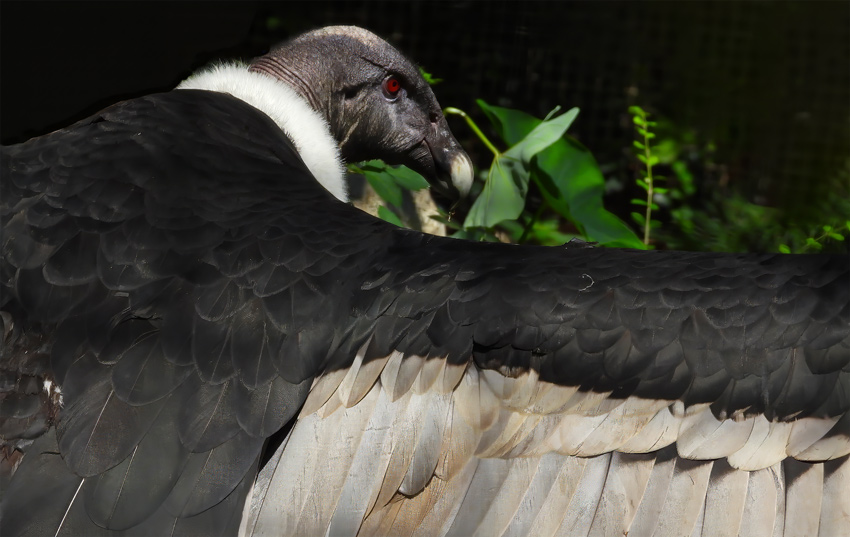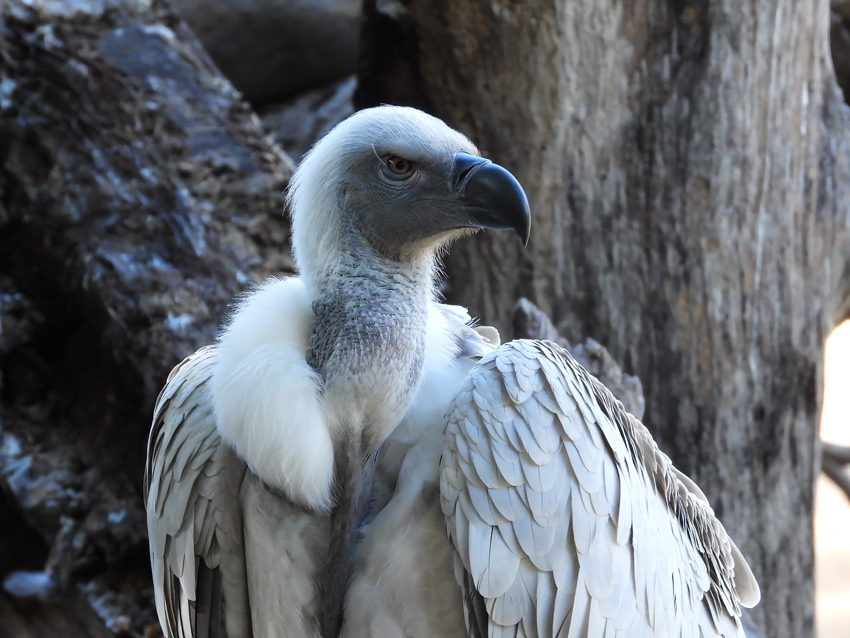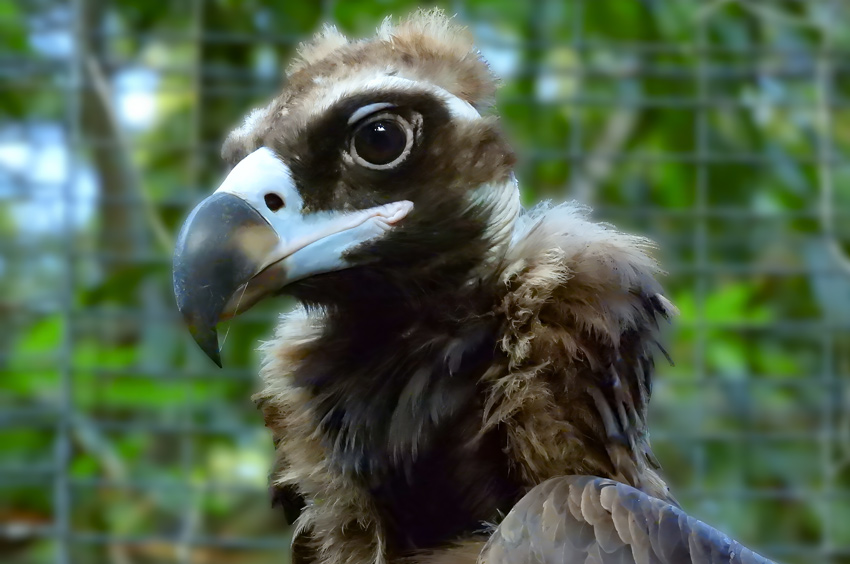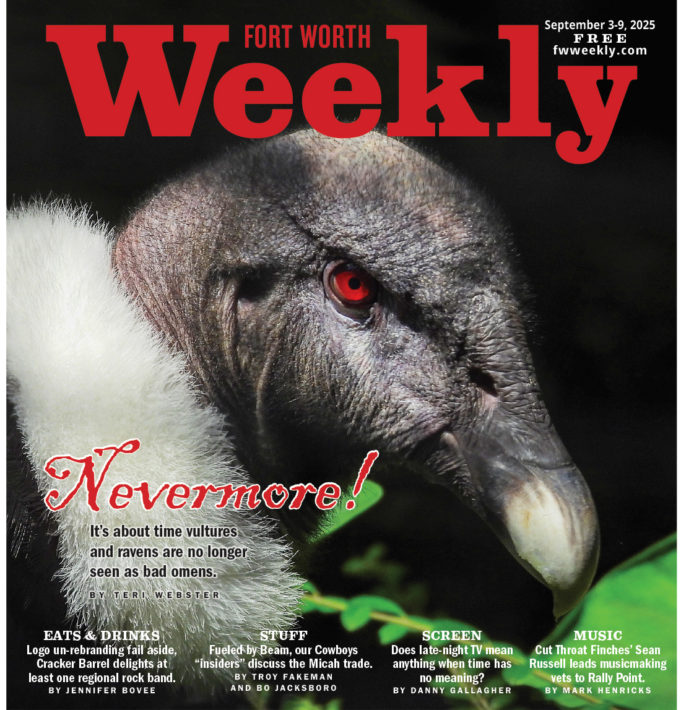Perched among mist-covered leaves at the Fort Worth Zoo, the jagged black silhouette of a raven is a ghostly shadow in the morning light. He is quiet, watching. Next to him, a chocolate-brown cinerous vulture stares, unbothered, as she keeps watch over their habitat.
The peaceful scene hardly fits the macabre stigmas often associated with these beautiful and majestic birds.
Long before social media gave us trolling and disinformation, ravens and vultures were caught in what is — for lack of better term — a public relations nightmare. From ancient mythology and Edgar Allen Poe to popular culture and scary movies, harmful stereotypes have plagued these birds.
Around Halloween, images of ravens and vultures are often tacked onto cardboard haunted houses and tombstones. Other decorations show the birds looking over the shoulders of green-skinned witches stirring cauldrons.
Keepers who work with ravens and vultures at the zoo hope to show a different view of these often-misunderstood birds.
“People find them kind of spooky or scary, especially vultures, because they do eat dead things,” said Annabelle Decker, a bird keeper who works with the zoo’s raptors. “And I think that’s where that comes from, because that can be seen as something that’s gross or scary. In reality, they are some of the cleanest birds, and they can ingest pathogens, and they don’t get sick with them.”

Photo by Teri Webster
A group of vultures is one of the most efficient sanitation crews on the planet. Their stomach acid neutralizes deadly viruses and bacteria, including botulism, rabies, and even anthrax. They effectively stop the spread of disease at its source.
“They do a critical job of cleaning up dead animals that nobody else wants to deal with,” said Brad Hazelton, bird curator for the Fort Worth Zoo. “They do a great job of keeping disease down. Because obviously, if we had those dead animals all over the place, that would lead to some issues.”
While vultures are deep cleaners, ravens are intelligent scavengers who also play a key role in cleaning up carrion.
“Even though they all play a similar role, they’re all special,” said keeper Olivia Northrup. “They’re specially designed for their role in the environment, and they’re really good at what they do.”
Ravens are known for their intelligence, and the zoo’s white-necked raven, housed with the cinereous vulture, is a good example. Decker describes him as “a character” and “fun to work with.” During the scorching Texas summers, keepers provide a fan for the birds to help them keep cool.
The raven uses the fan as a karaoke mic.
“One of his favorite things to do is sit in front of the fan and yell into it like a little kid would, and he likes to hear his voice vibrate back at him,” Decker said. “One day, he made every variation of a raven call. He wanted to hear each sound come back at him in a different way.”

Photo by Teri Webster
His playful curiosity is a hallmark of corvids.
“They are extremely intelligent,” Hazelton said. “That’s probably the most intelligent bird we have at the zoo. They are capable of mimicking speech and working out amazing puzzles. They figure out things so quickly.”
So why are vultures and ravens so feared or even loathed?
In some versions of Greek mythology, Zeus sends vultures to torture Prometheus as punishment for stealing fire from Olympus and giving it to humanity.
A century ago in Europe, bearded vultures were hunted to near extinction along the Alps due to the mistaken belief that they were after lambs and small children.
In Norse mythology, Odin turned a raven from white to black after the raven reported bad news to him.
Edgar Allan Poe famously penned “The Raven,” further cementing the bird’s reputation as a harbinger of grief and misfortune.
The scariest story, though, is the threat that some species face in the wild.
In parts of South Asia, for example, anti-inflammatory drugs like diclofenac are used to treat cattle. The drugs are lethal to vultures that feed on the carcasses of cattle that die.
In Africa, poachers will poison elephant and rhino carcasses to kill vultures, Hazelton said. This is done to eliminate the circling birds because they serve as a natural alarm system that alerts wardens to the location of a dead animal.

Photo by Teri Webster
Closer to home, the California Condor, one of the world’s largest flying birds, faces lead poisoning from spent ammunition in animals killed by hunters, according to the Peregrine Fund, a birds of prey conservation group. Lead poisoning also impacts other scavengers.
Themes of awareness and conservation remain at the forefront even as the zoo leans into the Halloween season. Around this time of year, birds, gorillas, rhinos, and elephants are among the animals that will have the chance to play with, dismantle, and devour pumpkins as a form of gourmet enrichment.
Northrup noted that they provide similar enrichment games for the raptors throughout the year, like hiding food so the birds can exercise their natural scavenging instincts.
Long after the Halloween decorations are put away, ravens and vultures will remain a vital, beautiful, and vulnerable part of our ecosystem.
Their keepers say they hope people look beyond stereotypes and see them as essential, helpful parts of nature.
“We need to be happy that they’re here, for sure,” Hazelton said.

Photo by Teri Webster

Photo by Teri Webster













